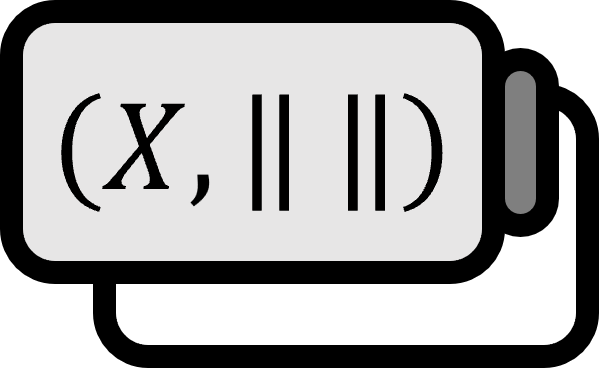Necessary and Sufficient Conditions for a Subset of a Normed Space to be Bounded
Definition
Diameter
Given a normed space $(X, \left\| \cdot \right\|)$, the diameter $\diam M$ of a non-empty subset $M \subset X$ is defined as follows. $$ \diam M =: \sup\limits_{x, y \in M} \left\| x - y \right\| $$
Bounded
If $\diam M \lt \infty$ is satisfied, then $M$ is said to be bounded.
Explanation
In a normed space, since the metric can be naturally induced as $d (x, y) =: \left\| x - y \right\|$, the above definition is, speaking in terms of metric spaces, as follows.
$$ \diam M =: \sup\limits_{x, y \in M} d(x, y) $$
From the following theorem, it can be understood that a subset of a normed space being bounded means that the set of norms of the elements is bounded.
Theorem
The necessary and sufficient condition for a subset $M \subset X$ of a normed space $X$ to be bounded is ② the existence of a positive number $c \gt 0$ such that for all $x \in M$, $\left\| x \right\| \le c$ holds.
Proof
$\text{\textcircled 1} \Longrightarrow \text{\textcircled 2}$
Assume that $M \subset X$ is bounded. That is, the following holds for some $C > 0$.
$$ \sup\limits_{x, y \in M} \left\| x - y \right\| \lt C \tag{1} $$
For a fixed $y \in M$, let $c$ be $c = C + \left\| y\right\|$. Then for all $x \in M$, the following holds.
$$ \begin{align*} \left\| x \right\| &= \left\| x - y + y \right\| \\ &\le \left\| x - y \right\| + \left \| y \right\| & \text{by triangle inequality} \\ &\lt C + \left\| y \right\| & \text{by } (1) \\ &= c \end{align*} $$
$\text{\textcircled 1} \Longleftarrow \text{\textcircled 2}$
Suppose a positive number $c \gt 0$ satisfies $\left\| x \right\| \le c$ for all $x \in M$. Then for all $x, y \in M$, $\left\| x \right\| + \left\| y \right\| \le 2c$ holds. Since $\left\| x - y \right\| \le \left\| x \right\| + \left\| y \right\|$,
$$ \sup \limits_{x, y \in M} \left\| x - y \right\| \lt \infty $$
■
